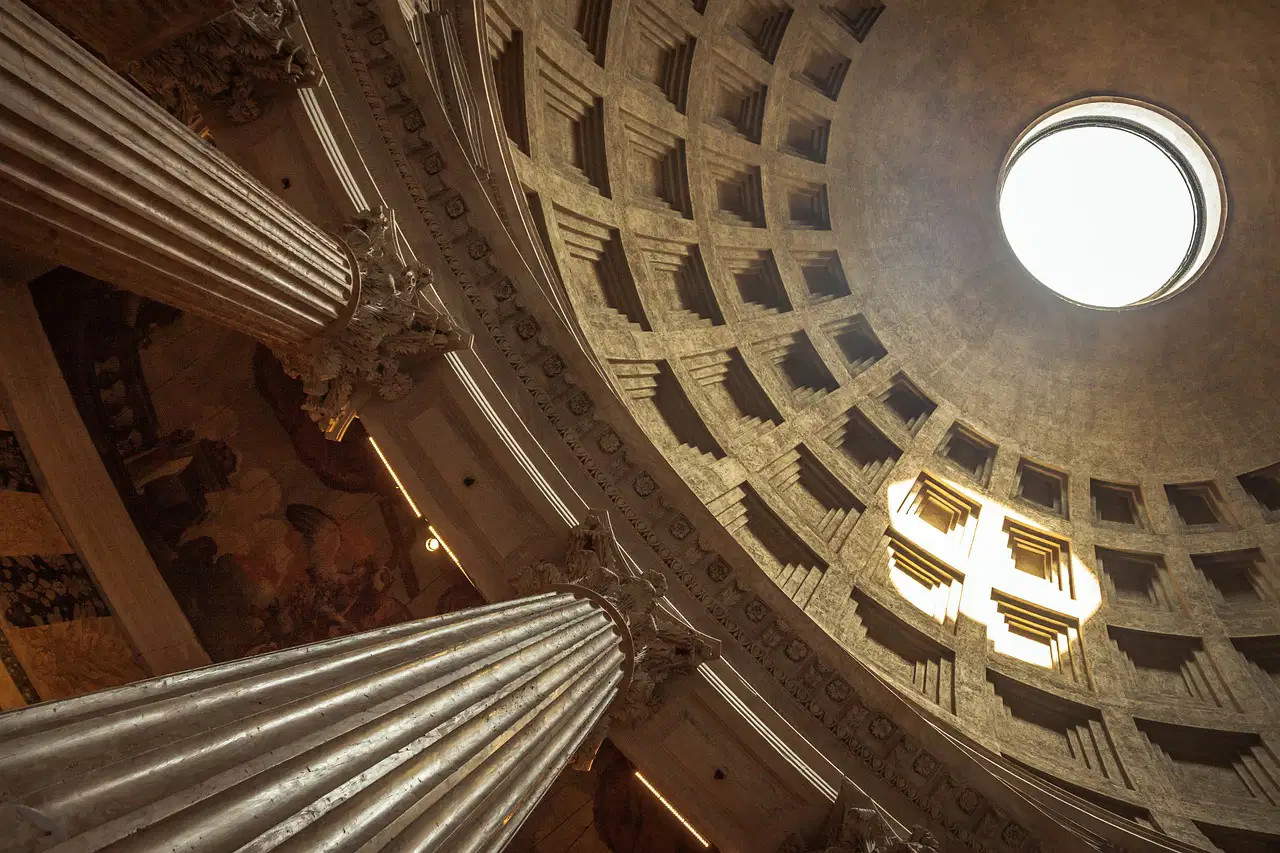From Tuesday, November 25, 2025, the Beyond the Pantheon itinerary opens to the public, providing access to the rooms of the Basilica of Neptune, hitherto almost unknown spaces that develop behind the Rotunda and that through their stratifications restore the monument’s long history, from Roman times to contemporary times.
These rooms hold invaluable evidence about the millennial history of the Pantheon and the landscape that surrounded it: marble fragments, decorative elements, frescoes, and liturgical architecture removed over the centuries from the Rotunda to make room for new worship requirements. Alongside these materials are exhibited artifacts mainly from the isolation excavations of the late 19th century, documenting not only the transformations of the Pantheon and the Basilica of Neptune, but also those of the entire Campus Martius. Out of this rich and articulated ensemble comes today a path that integrates architectural recompositions, accurate three-dimensional models, digital reconstructions, and immersive installations to offer a more complex and broader reading of the history of the monument and its urban context.
The itinerary unfolds as a journey between the Roman and Christian Pantheons. The itinerary opens with an immersive videomappingprojected on the wall separating the exhibition spaces from the Rotunda. The visual “breakdown” of this wall diaphragm becomes a true narrative tool: an almost cinematic play of light and images that reconstructs the effects of theOculus, showing how the building was conceived as a great cosmic instrument. The public will thus be able to observe the path of light at the most significant moments of the ancient calendar, perceiving the original link between the monument, the sky, time and the rhythm of the solar year.
The first section is dedicated to the Pantheon of the Emperors and the ancient landscape that surrounded it. The integration of three-dimensional models, digital reconstructions and materials from the excavations makes it possible to follow the evolution of the temple in its different construction phases, to see the Basilica of Neptune virtually recomposed in its original volumes and to read, thanks to a large interactive projection, the transformations of the Campus Martius over the centuries. A multimedia table guides visitors to discover the building phases and metamorphoses of the complex, stimulating an active exploration of its architectural history.
The second part of the itinerary is dedicated to the Christian Pantheon and opens with a nucleus of works that restore the story of the temple after its consecration in 609. The centerpiece of the room is the almost life-size reconstruction of the 8th-century ciborium, enriched by its affronted peacocks, restored to legibility through careful study and restoration. Next to it is a fresco detached during work on the royal tombs, which preserves valuable traces of the original decoration, and the recomposition of the 17th-century aedicule, dismantled in the 1960s and preserved in fragments in the rooms behind. For the first time the public can grasp its complete form and imagine the presence of the icon of Our Lady of the Pantheon that once stood there.
The new route is now also accessible to people with mobility difficulties thanks to the installation of an internal elevator, which expands the accessibility of the rooms.
Visits to “Beyond the Pantheon” take place every day, with the only exception of the first Sunday of the month, and are conducted in limited groups of up to twenty-five participants. The duration of the tour is forty-five minutes. The individual ticket includes a special visit to the spaces of the Basilica of Neptune (10 euros) and autonomous access to the Pantheon (5 euros). Entrance to the Rotunda is through a dedicated access inside the Basilica of Neptune. Tickets can be purchased exclusively through the Musei Italiani app and platform, available for iOS and Android devices.
 |
| Beyond the Pantheon: the rooms of the Basilica of Neptune, behind the Rotunda, open to the public in Rome |
Warning: the translation into English of the original Italian article was created using automatic tools. We undertake to review all articles, but we do not guarantee the total absence of inaccuracies in the translation due to the program. You can find the original by clicking on the ITA button. If you find any mistake,please contact us.